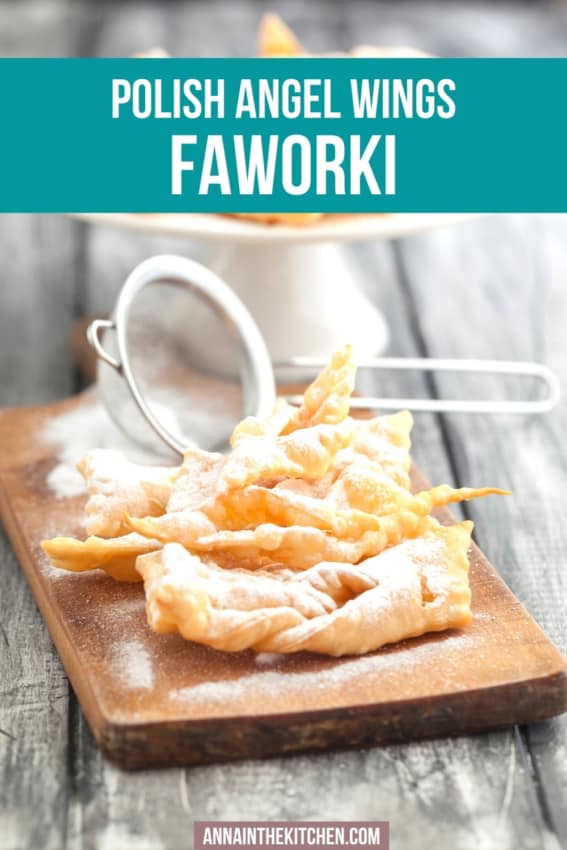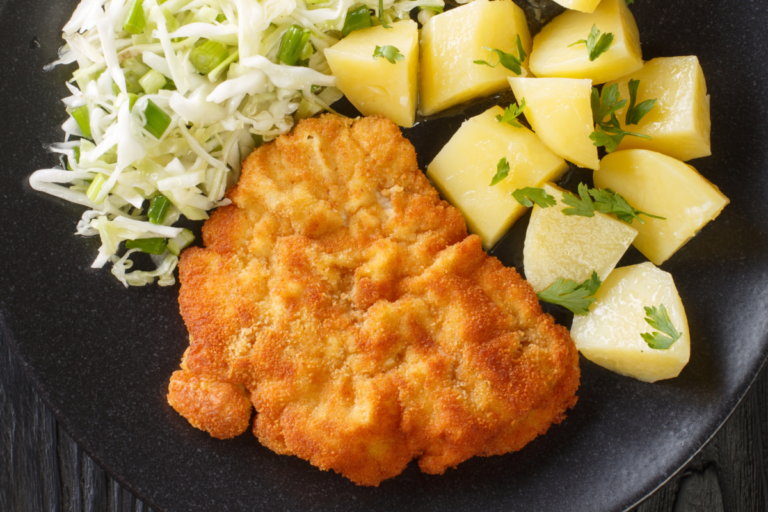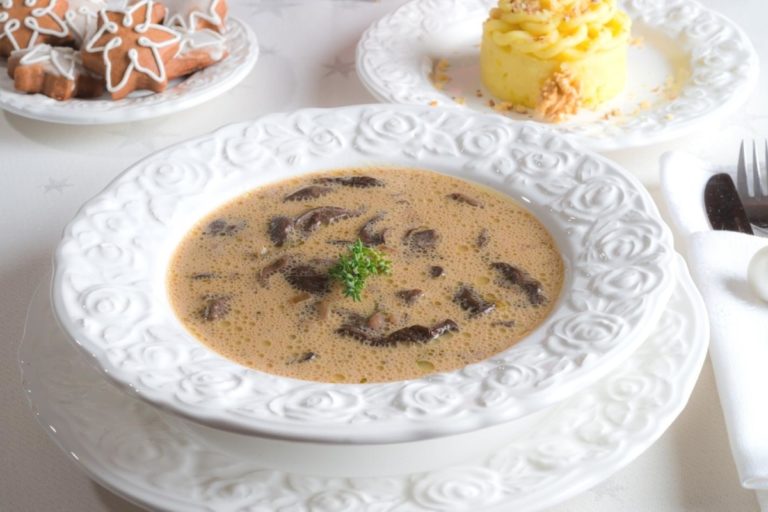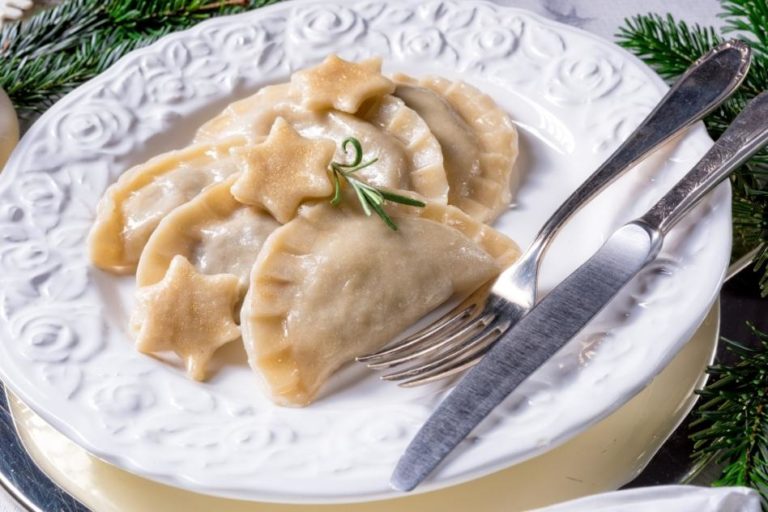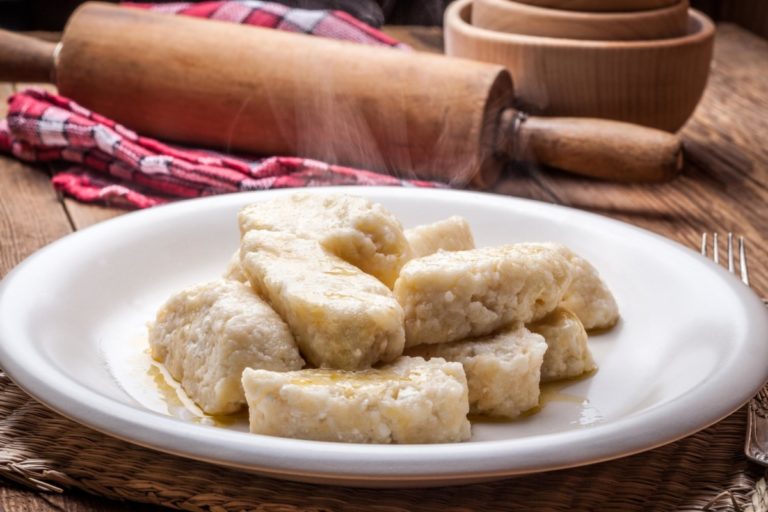How to Make Faworki: Polish Angel Wings
Faworki are traditionally eaten for Fat Thursday, along with paczki. It’s the last day of feasting before the Lent begins.
Their shape resembles a folded bow or ribbon and hence the Polish name, borrowed from the French faveur – a narrow silk ribbon.
Initially, faworki were actually made of donut dough, which made them heavy and greasy. Later, they were made of sponge dough, and finally of the so-called quench dough, which today is most often used to make faworki. Changing the recipe made them light, thin and crunchy.
The Polish word chrust means “dry branches” or “brushwood”, because they should crackle and rustle when eating.
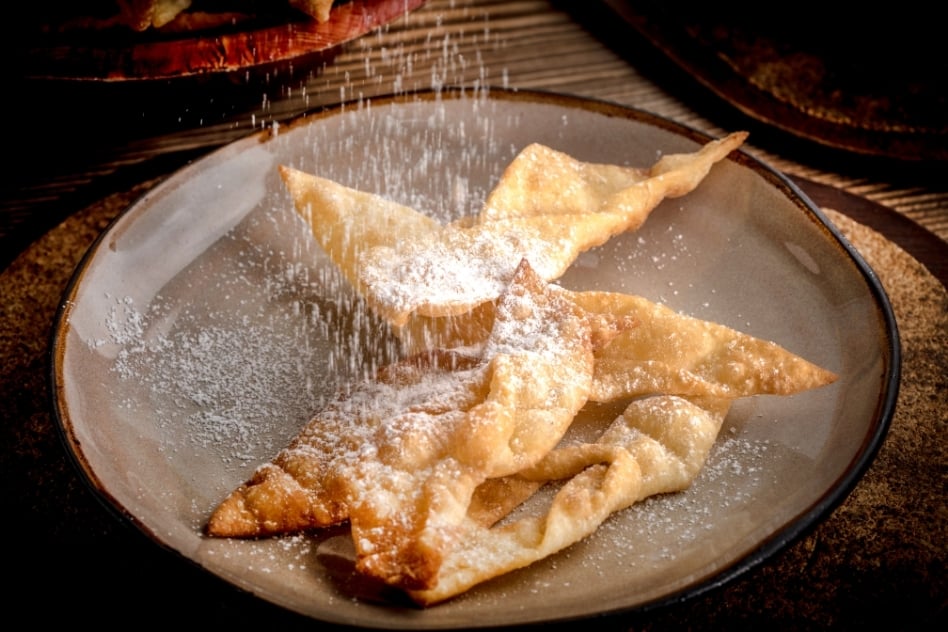
Recipe Pointers For Faworki – Polish Angel Wings
- If you use a pasta maker instead of the traditional rolling pin, you’ll save a lot of time.
- Faworki, Chruściki taste perfect when served with powdered sugar.
- If you want truly traditional faworki, use lard instead of oil for frying.
- You can make the Chrusty or Angel Wings as light or as chunky as you like. I prefer the lighter version since they really remind me of angels wings.
- You can use rum instead of vinegar, as tradition states.
- Do not fry too many at a time or they’ll stick to each other.
- Do not leave the stove at any time while frying, or they have a chance of burning.
- Use a slotted spoon, kitchen tongs or a kitchen spider to remove the dough from the oil.
- Faworki are sometimes referred to as bow ties, because they look like that.
- Dust lightly with powdered sugar before serving.
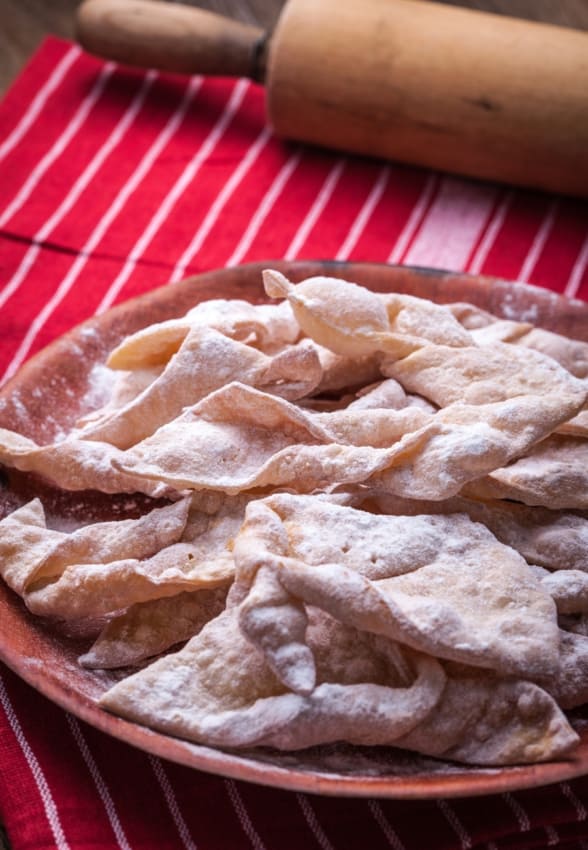
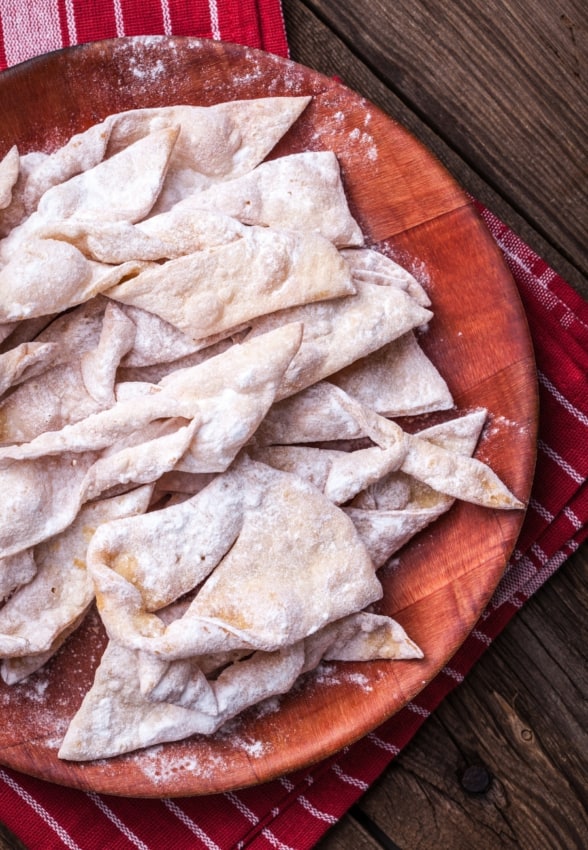
FAQs about Faworki – Angel Wings
What does the word faworki mean?
Faworki means angel wings or dried twigs. It’s a word used for the crispy deep-fried dessert made before Lent and in the last week of Lent around Fat Thursday. They’re also made at Carnival and very popular around Christmas.
Are Polish angel wings eaten in other countries?
Faworki is made in many other countries and cultures. It’s called favorki in Belarus and Bulgaria, boží milosti in Czechia, klejner in Denmark, kroštule in Croatia, calzones rotos in Chile, merveilles or bugnes in France, diples in Greece, zaķauši or rabbit ears in Latvia, chiacchiere or diples in Italy, khvorost which means twigs in Russia, flancati in Slovenia, pestiños in Spain, žagarėliai in Luthuania, Khapsey in Tibet, fánka in Sloavkia, minciunele in Romania, or Fasnachtschüechli in Germany.
How long will faworki last?
Faworki last for a few days at room temperature, but they taste best when consumed fresh.
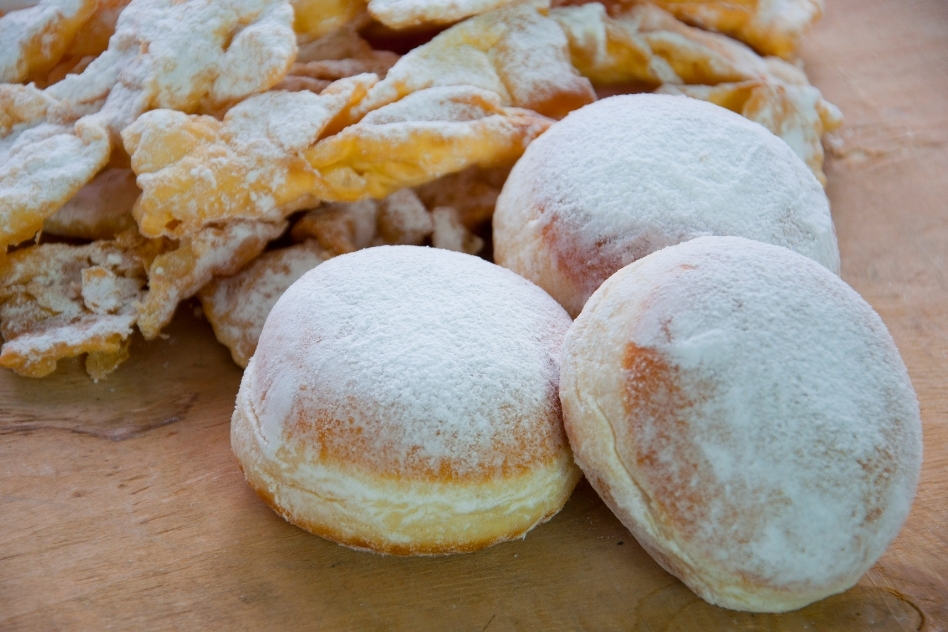
Faworki: Polish Angel Wings
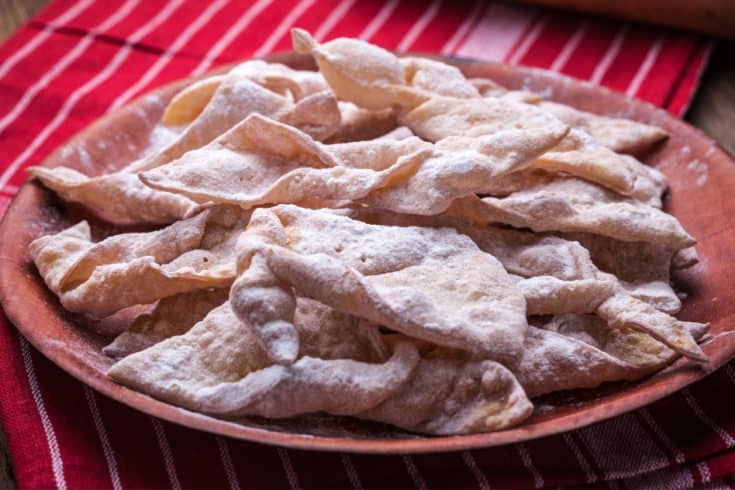
Ingredients
- 2.5 cups of flour
- 1/2 cup of sour cream
- 4 egg yolks
- 1 tablespoon of butter
- 1 tablespoon of powdered sugar
- 1 teaspoon of vinegar
- oil to fry
- powdered sugar to sprinkle on top
Instructions
- Put all your ingredients (minus oil to fry) in a big bowl, mix together and knead the dough.
- Put the dough ball on a dry and clean surface and knead the dough more by flattening it and kneading again.
- In order for the faworki dough to be well aired, it should be kneaded several times and even hit with a rolling pin. I recommend doing it for about 15 minutes. If you have a Kitchenaid pasta attachment you can run it through it twice to speed things up.
- Split the dough into three pieces and cover two of them in a foil, while you work on the first one by rolling it out as thin as possible on a clean and dry work surface (you can sprinkle it with some flour). The flattened dough needs to be as thin as possible, almost transparent.
- Using a knife or knurling, cut the cake into strips no wider than 1" and no longer than 4". Make an incision in the center of each strip through which to pass (thread) one end of the dough.
- Cover with a cotton cloth so it doesn't dry and repeat this step with your other two pieces of dough.
- Prepare the oil in a giant frying pan or wide pot and heat it up to around 340 F, not hotter. If you don't have a thermometer you can check it by putting one angel wing on the oil - it should instantly come out to the top.
- Fry your angel wings fro about 40 seconds on each side and using kitchen tongs remove from the frying pan and spread them out on paper towels.
- Your faworki should have some air bubbles and be crunchy, not bendy. Sprinkle them with powdered sugar.
Nutrition Information:
Yield:
55Serving Size:
1Amount Per Serving: Calories: 49Total Fat: 2gSaturated Fat: 1gTrans Fat: 0gUnsaturated Fat: 1gCholesterol: 15mgSodium: 8mgCarbohydrates: 8gFiber: 0gSugar: 2gProtein: 1g
